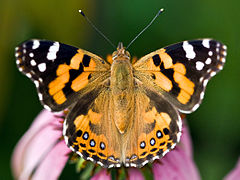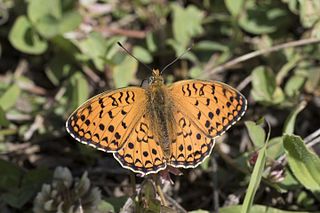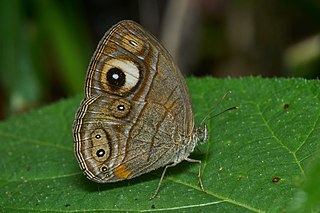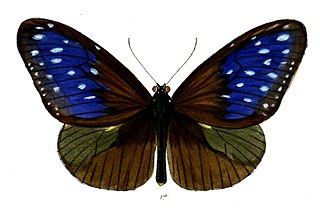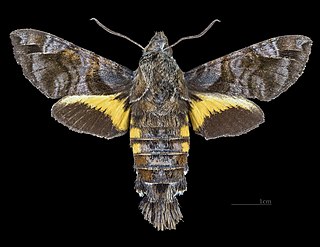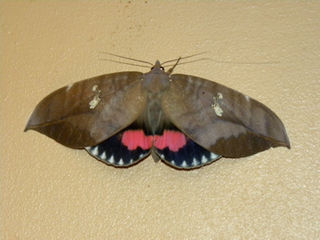| Cynthia | |
|---|---|
 | |
| Vanessa cardui | |
| Scientific classification | |
| Kingdom: | |
| Phylum: | |
| Class: | |
| Order: | |
| Family: | |
| Subfamily: | |
| Tribe: | |
| Genus: | |
| Subgenus: | Cynthia |
The Cynthia group of colourful butterflies, commonly called painted ladies, comprises a subgenus of the genus Vanessa in the family Nymphalidae. They are well known throughout most of the world.

Butterflies are insects in the macrolepidopteran clade Rhopalocera from the order Lepidoptera, which also includes moths. Adult butterflies have large, often brightly coloured wings, and conspicuous, fluttering flight. The group comprises the large superfamily Papilionoidea, which contains at least one former group, the skippers, and the most recent analyses suggest it also contains the moth-butterflies. Butterfly fossils date to the Paleocene, which was about 56 million years ago.

In biology, a subgenus is a taxonomic rank directly below genus.

Vanessa is a genus of brush-footed butterflies in the tribe Nymphalini. It has a near-global distribution and includes conspicuous species such as the red admirals, the Kamehameha, and the painted ladies of subgenus Cynthia: painted lady, American painted lady, West Coast lady, Australian painted lady, etc. For African admirals see genus, Antanartia. Recently, several members traditionally considered to be in the genus Antanartia have been determined to belong within the genus Vanessa.
Contents
The group includes:
- Painted lady (Vanessa cardui), which is almost global in its distribution
- Australian painted lady (Vanessa kershawi)
- American (painted) lady (Vanessa virginiensis)
- West Coast lady (Vanessa annabella).

Vanessa cardui is a well-known colourful butterfly, known as the painted lady, or formerly in North America as the cosmopolitan.
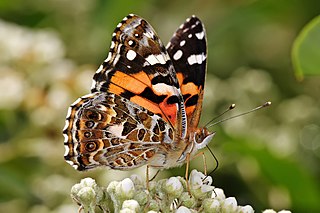
The Australian painted lady butterfly is mostly confined to Australia, although westerly winds have dispersed it to islands east of Australia, including New Zealand. Debate surrounds the taxonomy of this species. Some believe that the Australian painted lady should be a subspecies of the painted lady due to the similarity in lifestyle and behaviour. Furthermore, the painted lady is found around the globe, but Australia is the only location in which it varies enough to be considered a separate species.
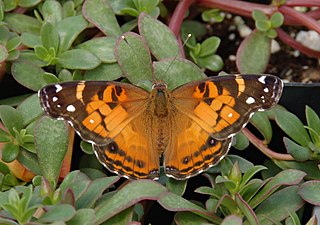
The American painted lady or American lady is a butterfly found throughout North America.






